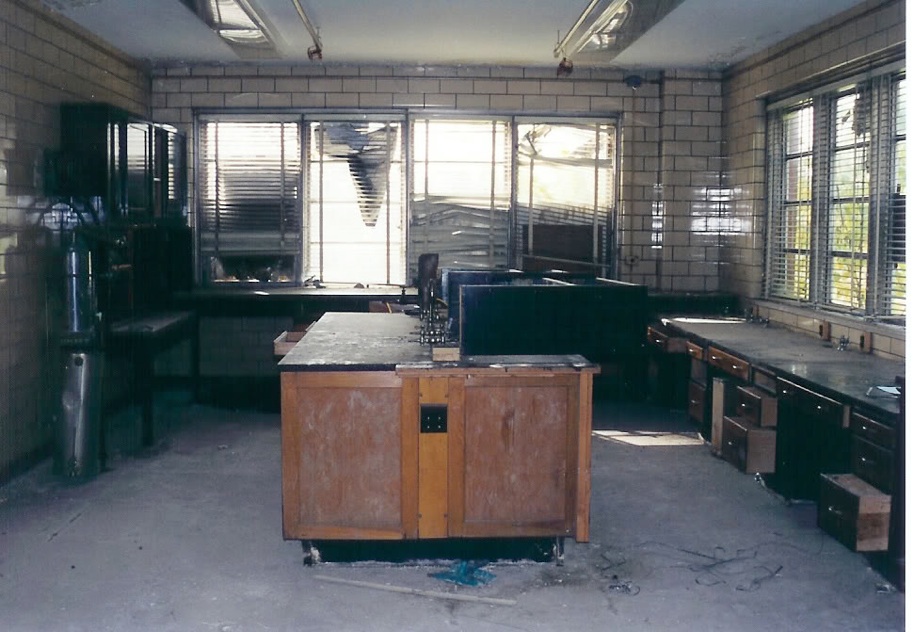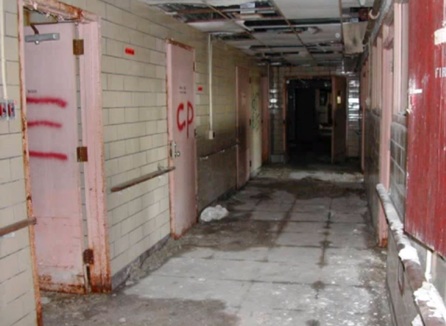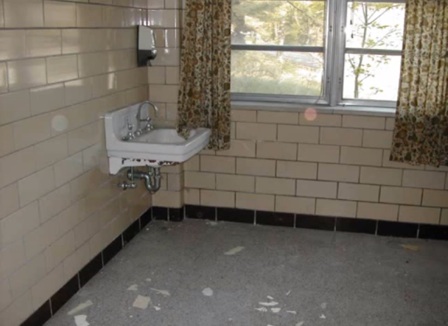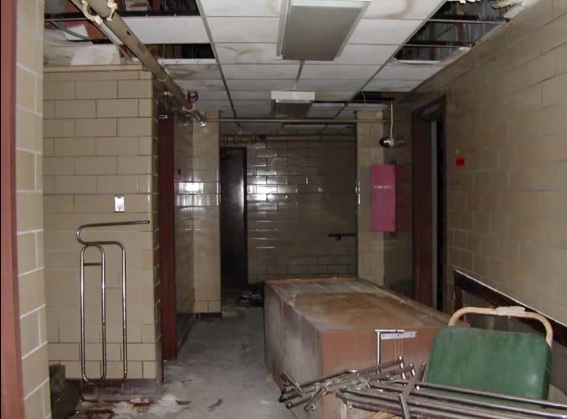HUTCHINSON BUILDING

The Hutchinson Building, originally known as the Admissions and Treatment Building, was one of Dixmont’s newer structures. Construction began in 1949, but construction was delayed for a few years when the foundation slipped in a landslide. The Hutchinson Building shared a similar design to medical/surgical buildings of the same era at many state hospitals. At the time, medical/surgical buildings reflected the modern belief that mental illness could be treated biologically using new medicine and surgical procedures - just like physical illness. As such, they were constructed more like general hospitals where the average stay time of patients was measured in days or weeks rather than years. The mental health community was hopeful that patients could simply be brought to a medical/surgical facility, be administered a biological treatment, and be on their way before long - effectively eliminating the need for sprawling “human warehouse” institutions. While the intentions were good, many of the antipsychotic medications and procedures administered at these new facilities left patients repressed and unable to care for themselves. Thus, many medical/surgical facilities turned into the human warehouses they intended to replace, this time even more uncomfortable thanks to the smug architecture originally designed for short-term stays. However, unlike many state hospitals, the Hutchinson Building was not built to replace the aging Reed Hall and thus was not large enough to accommodate long-term patient housing. While that may have been the result of a cost-saving move on the state’s part, it perhaps worked in the patients’ favor as Dixmont retained its more spacious patient housing during an era of crowded, prison-like medical/surgical facilities.






When the building opened in 1954, it was described as sterile, modern, and clean. However, 50 years later, the interior of this building was one of the most unnerving to explore on the entire Dixmont campus. Trespassers often reported a rush of hot rancid air escaping the damp building as soon as a door was opened. This was because most of the windows were intact, prohibiting ventilation and causing a greenhouse effect. Furthermore, the hallways were dark and encased in low ceilings, green tile walls, and moist spongy carpet. A few explorers have described the building as “unbearable”.






Some areas were in better condition than others. The ground floor was in particularly derelict shape due to persistent flooding. The morgue and autopsy room were located on this floor, a popular destination for explorers and ghost hunters. The second floor housed the admissions center where newly-arriving patients would be brought for initial observation and diagnosis. In some cases, violent patients would need to be held in the padded isolation rooms. The third floor was more intact and served as the campus’s hospital. Sick patients would be taken to the Hutchinson Building and given a hospital bed where they would be closely monitored by nurses. The intensive care unit, physical therapy department, X-ray rooms, a small cafeteria, and doctors’ offices were located in this building. Various patient services including a dentist’s office and a barber shop could also be found here.




The Hutchinson Building was also home to a fully-functioning laboratory. Despite common myths, Dixmont’s laboratory was not used for unethical experimentation on patients, but rather pathology and research in cooperation with local universities. Rumors regarding the inhumane treatment of patients at Dixmont following state ownership are mostly untrue. However, Dixmont did perform the primitive procedures of the time including pre-frontal lobotomies, electroconvulsive therapy, and insulin shock therapy. These became far less prevalent by the 1960’s and could no longer be prescribed without sound evidence proving why the procedure was necessary, but a former employee recalls that electroshock therapy was still performed each Monday and Thursday up to the hospital’s closure.

Infirmary
Nurses’ Station
Morgue Freezers
Autopsy Table
Labratory










